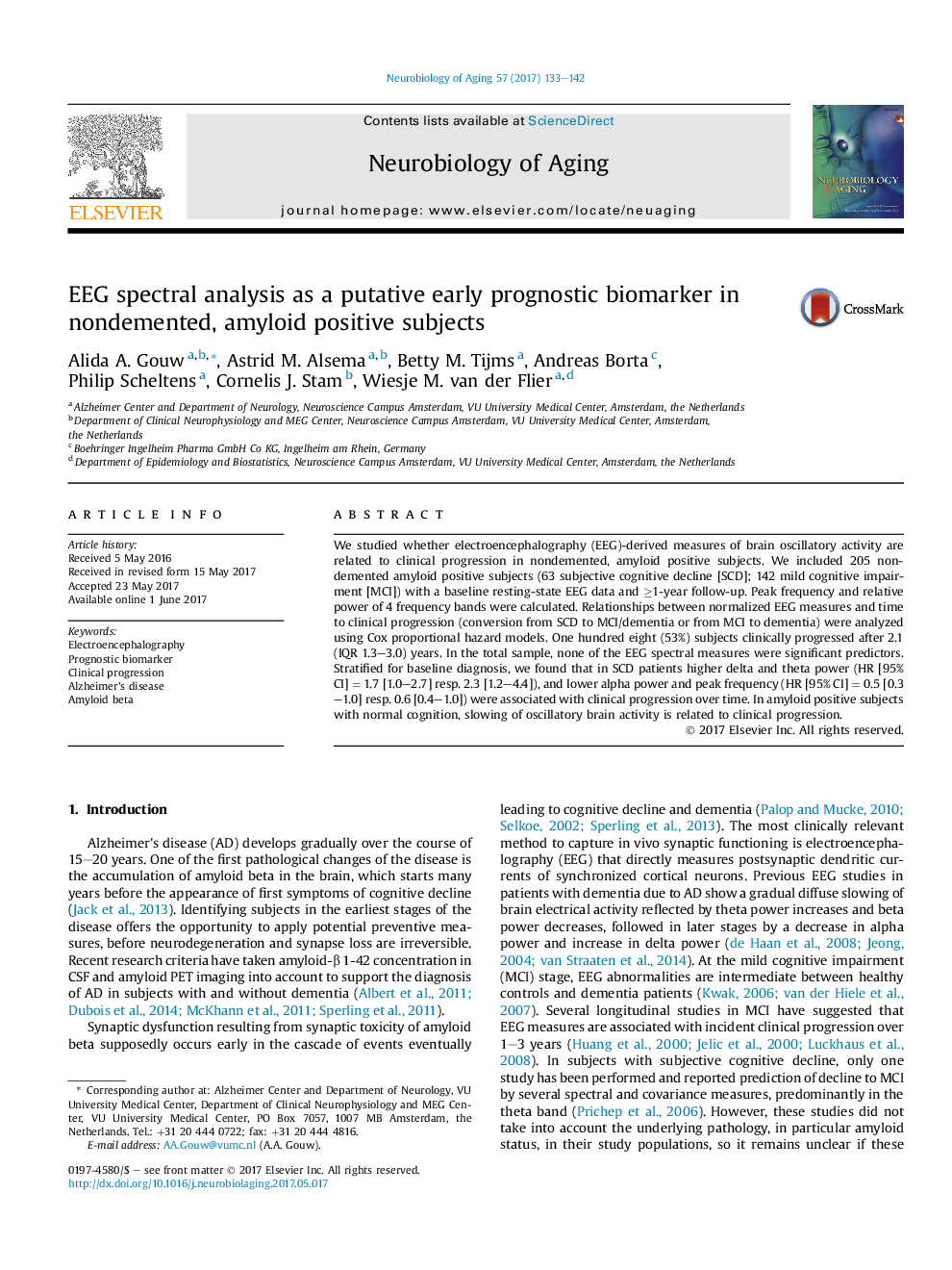| کد مقاله | کد نشریه | سال انتشار | مقاله انگلیسی | نسخه تمام متن |
|---|---|---|---|---|
| 4932655 | 1433527 | 2017 | 10 صفحه PDF | دانلود رایگان |
عنوان انگلیسی مقاله ISI
EEG spectral analysis as a putative early prognostic biomarker in nondemented, amyloid positive subjects
دانلود مقاله + سفارش ترجمه
دانلود مقاله ISI انگلیسی
رایگان برای ایرانیان
کلمات کلیدی
موضوعات مرتبط
علوم زیستی و بیوفناوری
بیوشیمی، ژنتیک و زیست شناسی مولکولی
سالمندی
پیش نمایش صفحه اول مقاله

چکیده انگلیسی
We studied whether electroencephalography (EEG)-derived measures of brain oscillatory activity are related to clinical progression in nondemented, amyloid positive subjects. We included 205 nondemented amyloid positive subjects (63 subjective cognitive decline [SCD]; 142 mild cognitive impairment [MCI]) with a baseline resting-state EEG data and â¥1-year follow-up. Peak frequency and relative power of 4 frequency bands were calculated. Relationships between normalized EEG measures and time to clinical progression (conversion from SCD to MCI/dementia or from MCI to dementia) were analyzed using Cox proportional hazard models. One hundred eight (53%) subjects clinically progressed after 2.1 (IQR 1.3-3.0) years. In the total sample, none of the EEG spectral measures were significant predictors. Stratified for baseline diagnosis, we found that in SCD patients higher delta and theta power (HR [95% CI] = 1.7 [1.0-2.7] resp. 2.3 [1.2-4.4]), and lower alpha power and peak frequency (HR [95% CI] = 0.5 [0.3-1.0] resp. 0.6 [0.4-1.0]) were associated with clinical progression over time. In amyloid positive subjects with normal cognition, slowing of oscillatory brain activity is related to clinical progression.
ناشر
Database: Elsevier - ScienceDirect (ساینس دایرکت)
Journal: Neurobiology of Aging - Volume 57, September 2017, Pages 133-142
Journal: Neurobiology of Aging - Volume 57, September 2017, Pages 133-142
نویسندگان
Alida A. Gouw, Astrid M. Alsema, Betty M. Tijms, Andreas Borta, Philip Scheltens, Cornelis J. Stam, Wiesje M. van der Flier,